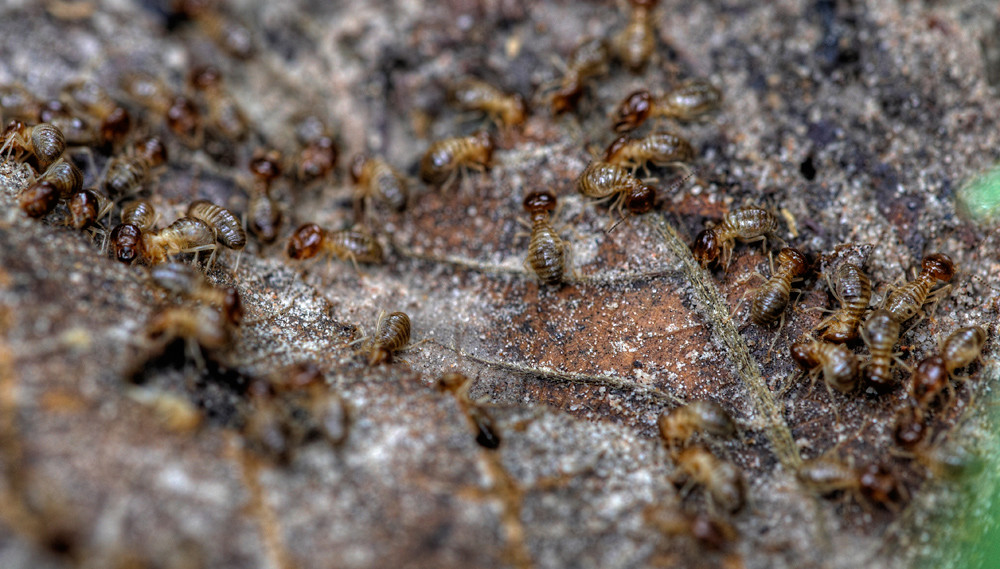Picture this: millions of years ago, your kitchen pest and nature’s most ingenious builders shared the same family tree. What you might not know is that termites didn’t just evolve from cockroaches—they literally ARE cockroaches, just ones that decided to become the ultimate home renovation experts. This incredible transformation story challenges everything we thought we knew about insect evolution and reveals how these tiny creatures became some of the most sophisticated architects on Earth.
The journey from scavenging roach to master builder isn’t just fascinating—it’s revolutionary. While their cockroach cousins stuck to midnight snacking in our pantries, termites embarked on an evolutionary adventure that would make them capable of constructing air-conditioned skyscrapers, underground cities, and climate-controlled nurseries. This metamorphosis represents one of nature’s most dramatic career changes, turning simple survivors into complex society builders.
The Shocking Family Secret: Termites Are Living Cockroaches
The scientific bombshell that rocked entomology wasn’t discovered in some dusty museum—it came from cutting-edge DNA analysis that revealed termites are actually a specialized group of cockroaches. This means every termite you see is technically a cockroach that chose architecture over midnight raids on your kitchen.
Unlike their free-living relatives, termites represent an evolutionary branch that decided cooperation was better than competition. While regular cockroaches remained solitary survivors, termites developed into highly organized societies with specialized roles, complex communication systems, and architectural abilities that put human engineers to shame.
When Cockroaches Discovered Teamwork: The Social Revolution
The transformation began when certain cockroaches started living together instead of going solo. This wasn’t just about roommates splitting rent—it was about discovering that working as a team could unlock incredible possibilities. Early termite ancestors learned that collaboration could solve problems no individual could tackle alone.
This social evolution created something unprecedented: insects that could think collectively. Individual termites became like cells in a superorganism, each contributing specialized skills to create something far greater than the sum of its parts. The shift from “me” to “we” mentality revolutionized what these creatures could achieve.
The Gut Revolution: How Digestive Systems Changed Everything
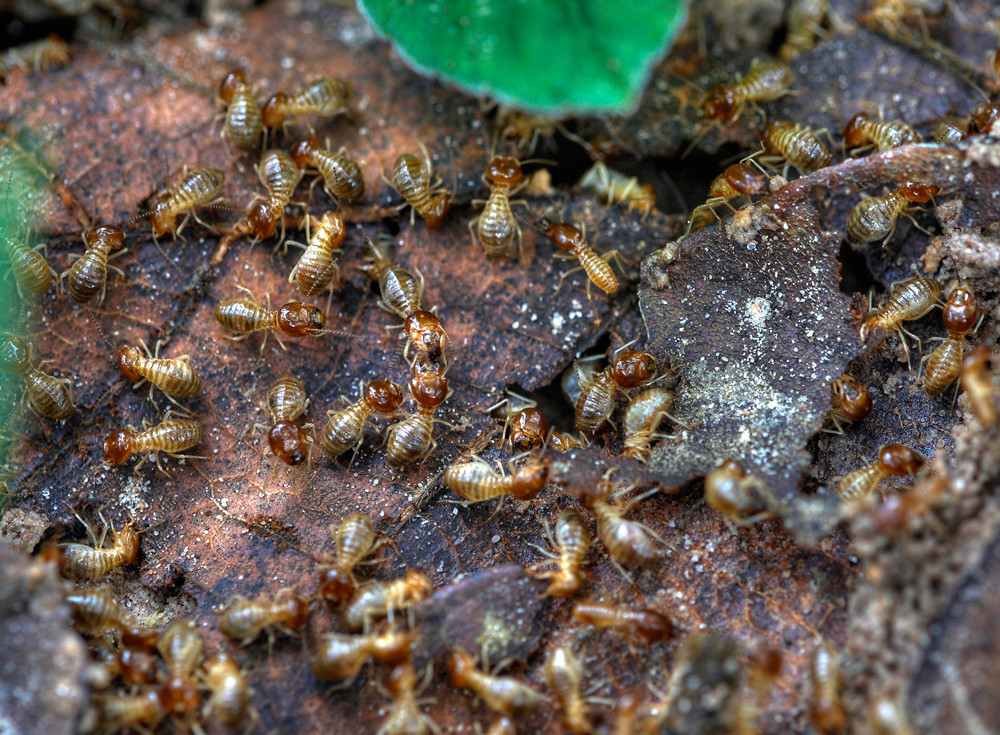
One of the most crucial evolutionary leaps happened in termite stomachs, where they developed partnerships with microscopic organisms that could break down cellulose. This digestive revolution meant termites could eat wood, paper, and other plant materials that most insects couldn’t process. Think of it as installing a high-tech recycling plant in your belly.
This dietary expansion opened up entirely new ecological niches. While cockroaches remained generalist scavengers, termites became specialists in processing dead plant material. This specialization would eventually drive their architectural innovations, as they needed to create structures that could house their colonies and protect their food sources.
Building the First Termite Cities: From Burrows to Skyscrapers
The earliest termite architects started simple, digging basic underground tunnels and chambers. But as their colonies grew larger and more complex, so did their construction projects. These underground cities featured multiple levels, specialized rooms for different functions, and intricate ventilation systems that would make modern engineers jealous.
What makes termite construction truly remarkable is that it’s achieved without blueprints, supervisors, or planning meetings. Each termite follows simple rules based on local conditions and chemical signals, yet together they create structures of breathtaking complexity. It’s like having thousands of construction workers who instinctively know exactly where to place each brick without ever seeing the final building plan.
The Climate Control Masters: Engineering Perfect Environments
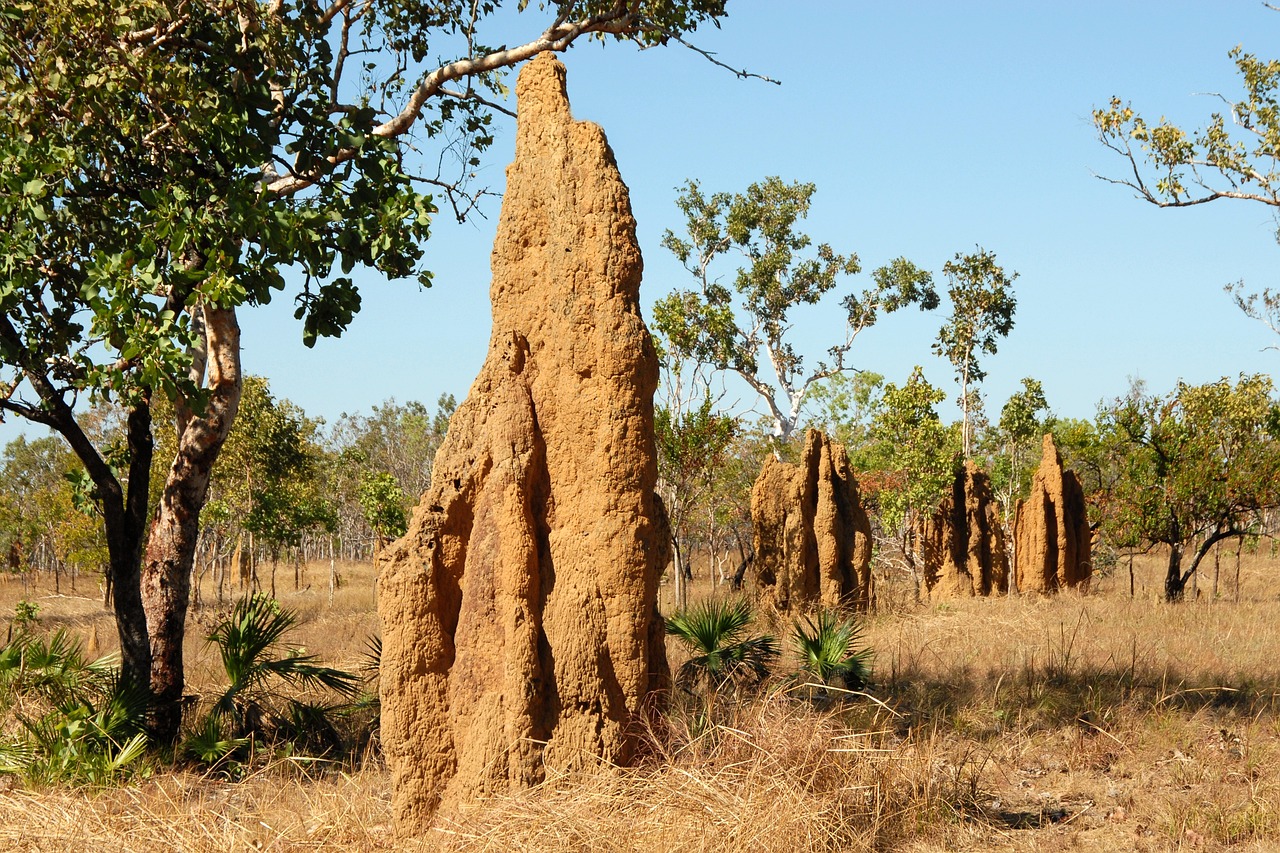
Termite mounds aren’t just impressive looking—they’re sophisticated climate control systems that maintain perfect temperature and humidity levels year-round. These natural air conditioners use passive ventilation, thermal mass, and strategic positioning to create comfortable living conditions without using a single watt of electricity.
The temperature regulation is so precise that some termite species maintain their nest temperature within a few degrees of their optimal range, even when outside temperatures fluctuate wildly. This level of environmental control requires understanding principles of thermodynamics that humans only figured out relatively recently.
Chemical Communication: The Language of Construction

Termites coordinate their massive construction projects through an intricate chemical communication system using pheromones—invisible scent signals that carry specific information. Different chemical combinations can signal “build here,” “bring food,” “danger,” or hundreds of other messages that keep the colony functioning smoothly.
This chemical language is so sophisticated that termites can communicate complex architectural plans through scent alone. Workers can detect microscopic traces of pheromones and respond appropriately, whether that means adding material to a wall, creating a new tunnel, or switching to a different construction task entirely.
Specialized Castes: The Ultimate Division of Labor

Termite societies developed distinct castes, each with specialized roles and even physical adaptations for their jobs. Workers handle construction and food gathering, soldiers defend the colony with enlarged heads and powerful jaws, and reproductives focus on creating the next generation. It’s like having a society where your job literally shapes your body.
This specialization allows termite colonies to achieve incredible efficiency. While a single cockroach has to be good at everything, termites can dedicate their entire existence to perfecting one crucial skill. The result is a society where every member is an expert in their field, contributing to collective achievements that would be impossible for generalists.
The Fungus Farming Innovation: Agricultural Architects
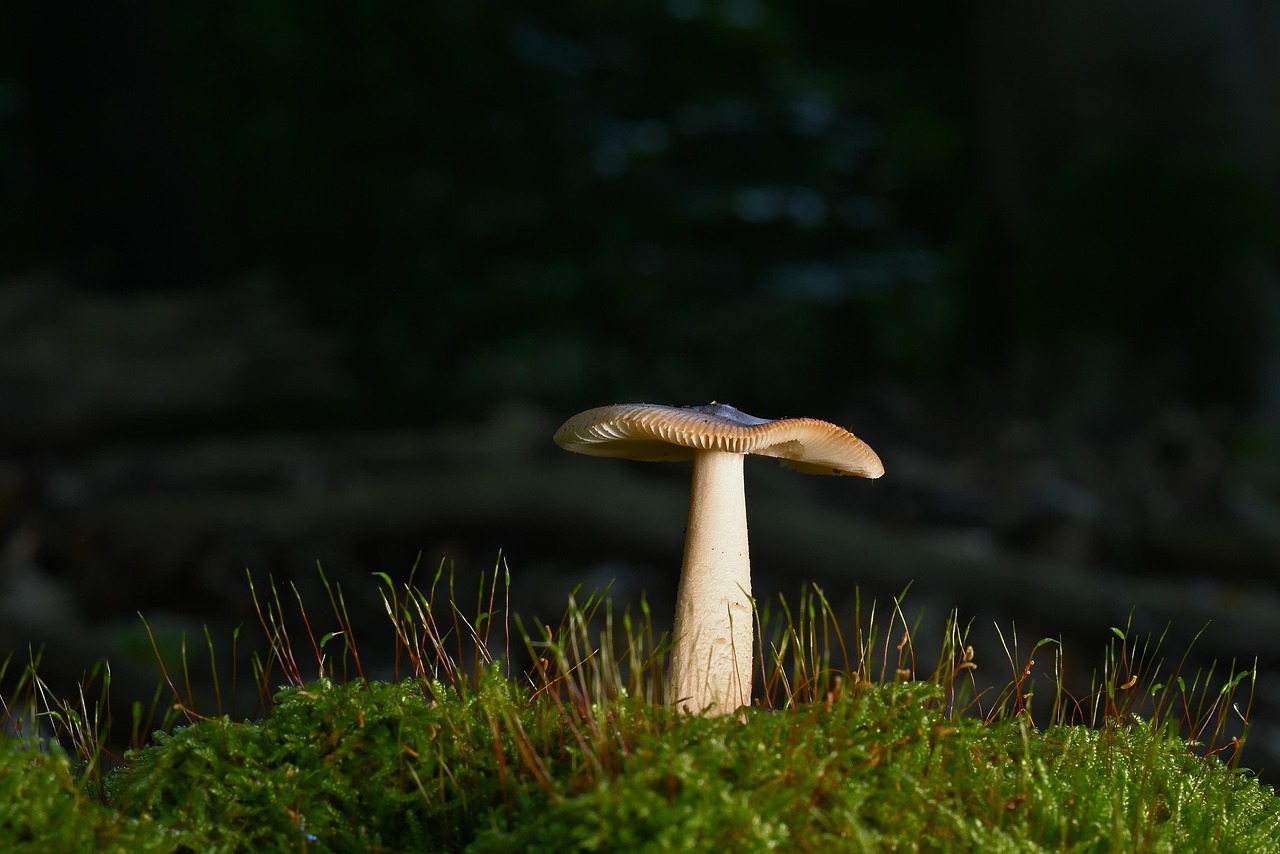
Some termite species took their architectural skills to the next level by becoming farmers. These agricultural termites build specialized chambers designed specifically for cultivating fungus gardens. They create the perfect growing conditions—controlling humidity, temperature, and airflow to maximize their fungal crops.
This farming innovation represents one of the most sophisticated examples of animal agriculture outside of humans. Termites collect plant material, process it into compost, inoculate it with fungal spores, and carefully tend their gardens. The fungus provides protein-rich food for the colony, while the termites provide the perfect growing environment—a partnership that’s been working for millions of years.
Navigation Without GPS: How Termites Find Their Way
Termite workers can navigate complex tunnel systems and find their way back to specific locations without getting lost. They use a combination of chemical trails, tactile cues, and even magnetic field detection to create mental maps of their territories. This internal GPS system allows them to coordinate massive construction projects across vast underground networks.
What’s particularly impressive is how termites can adapt their navigation when their environment changes. If part of their tunnel system gets damaged, they quickly establish new routes and update their chemical trail system. This flexibility ensures that construction and food gathering can continue even when faced with unexpected challenges.
Construction Materials: Making the Most of What’s Available
Termites are master recyclers who create building materials from whatever’s available in their environment. They mix soil, saliva, and chewed wood fiber to create a concrete-like substance that’s incredibly strong and durable. Some species even incorporate their own feces into their building materials, creating structures that are both functional and perfectly adapted to local conditions.
The resulting construction materials often have properties that surpass many human-made alternatives. Termite-built structures can be harder than concrete, more flexible than steel, and more durable than wood. These materials are also completely biodegradable, making termite architecture some of the most environmentally friendly construction on Earth.
Ventilation Systems: Breathing Buildings

Termite mounds feature sophisticated ventilation systems that ensure fresh air circulates throughout the colony. These systems use passive airflow, thermal gradients, and strategic placement of vents to create air circulation that keeps the entire structure well-ventilated. It’s like having a building that breathes naturally.
The ventilation design is so effective that some human architects now study termite mounds to improve building design. The principles termites use—thermal chimneys, pressure differentials, and strategic air channels—are being incorporated into modern green buildings to reduce energy consumption and improve air quality.
Emergency Response: Rapid Repair and Adaptation

When termite structures get damaged, the colony responds with remarkable speed and efficiency. Workers can quickly assess damage, mobilize repair crews, and restore functionality within hours. This rapid response capability ensures that critical functions like food storage, nurseries, and ventilation systems are quickly restored after any disruption.
The repair process involves sophisticated decision-making about resource allocation and priority systems. Termites somehow know which repairs are most urgent and can redirect workers from less critical tasks to emergency repairs. This flexibility and adaptability make termite colonies incredibly resilient to environmental challenges.
The Future of Termite-Inspired Architecture
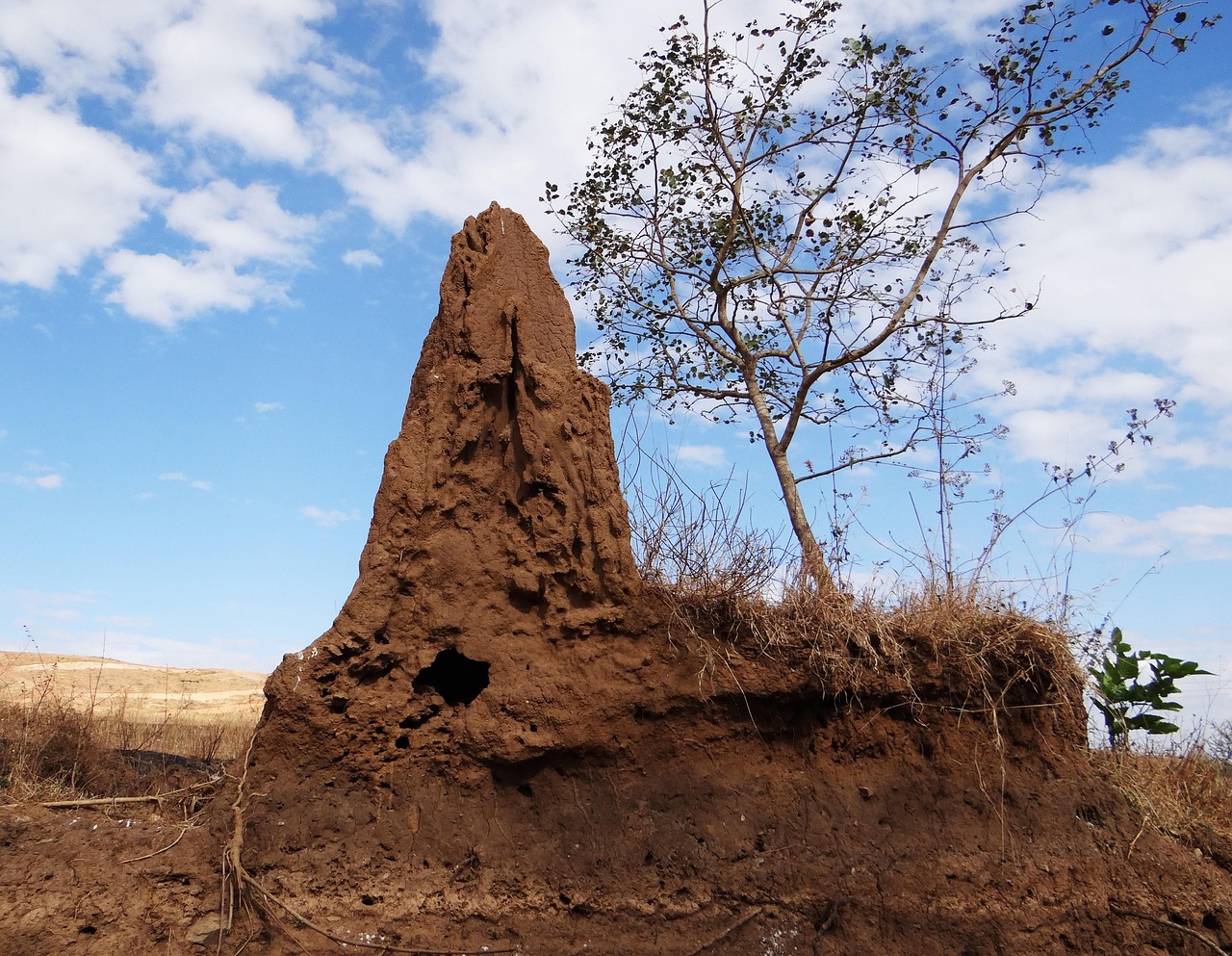
Human architects and engineers are increasingly looking to termite construction techniques for inspiration in sustainable building design. Termite principles are being applied to everything from passive cooling systems to self-organizing construction robots. The efficiency and sustainability of termite architecture offers valuable lessons for creating more environmentally friendly human buildings.
Research into termite construction is also revealing new possibilities for robotics and artificial intelligence. The way termites coordinate complex projects without centralized control is inspiring new approaches to swarm robotics and distributed problem-solving. These tiny architects may hold keys to solving some of humanity’s biggest engineering challenges.
Conclusion: From Pest to Genius
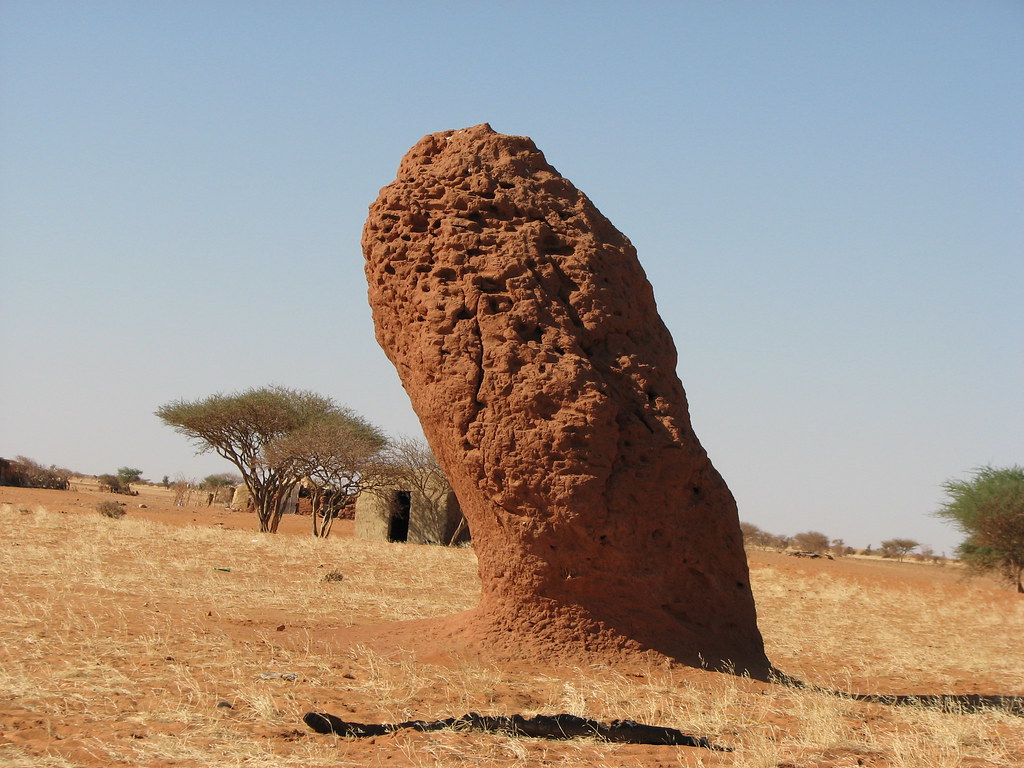
The transformation of termites from simple cockroaches into master architects represents one of evolution’s most remarkable success stories. These tiny creatures developed social cooperation, specialized roles, sophisticated communication systems, and construction abilities that continue to amaze scientists and engineers today.
Their journey from individual survivors to collective builders demonstrates how cooperation and specialization can unlock incredible possibilities. While their cockroach relatives remained generalists, termites chose a path of collaboration that transformed them into some of nature’s most impressive engineers. The next time you see a termite mound, remember that you’re looking at millions of years of evolutionary innovation compressed into a living, breathing architectural masterpiece.
What other creatures might be hiding architectural genius beneath their humble appearances?

